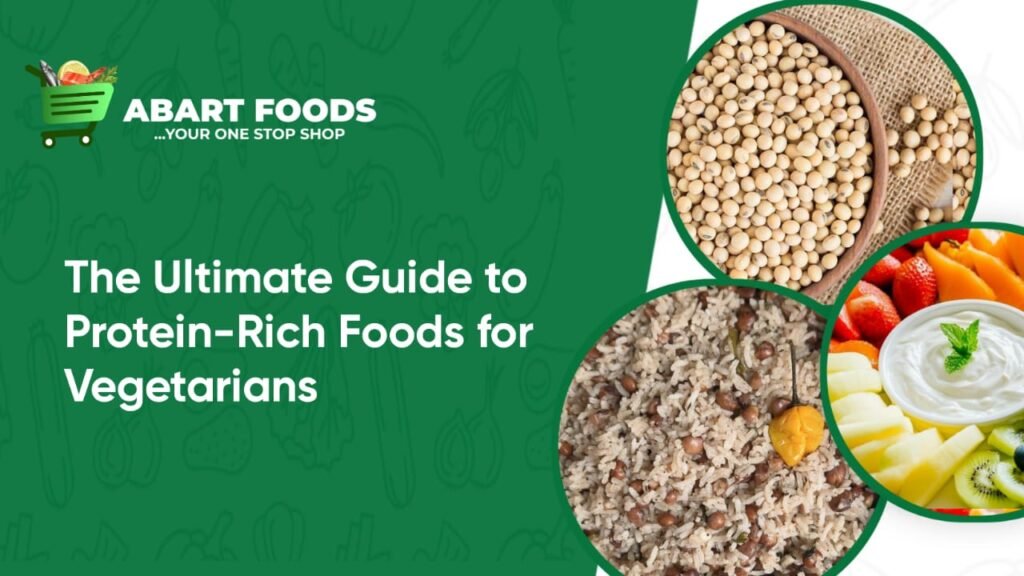Vegetarianism continues to rise in popularity, driven by ethical concerns, environmental awareness, and the health benefits of plant-based eating. One common concern, however, is whether vegetarian diets provide enough protein.
The good news? They absolutely can. With smart planning and variety, plant-based diets can easily meet and even exceed your daily protein needs. In this comprehensive guide, we’ll discuss:
- Why protein is essential for vegetarians
- Top sources of plant-based protein
- How to combine foods for optimal amino acid intake
- Delicious high-protein vegetarian meal ideas
- Practical tips for meeting your daily protein goals.
Why Protein Matters for Vegetarians
Protein is essential for building and repairing tissues, supporting the immune system, producing enzymes and hormones, and transporting oxygen throughout the body. It’s a cornerstone of human health no matter your diet.
Read Also: The Nutritional Facts of Beef Feet: Benefits, Recipes & Cooking Tips
How Much Protein Do You Really Need?
The recommended dietary allowance (RDA) for protein is 0.8 grams per kilogram of body weight for the average sedentary adult. That’s about 60 grams daily for someone who weighs 75 kg (165 pounds).
However, needs vary. You may require more if you are:
- Active or an athlete: To support muscle repair and growth
- Over 40–50 years old: To preserve muscle mass
- Pregnant or breastfeeding: To support your baby’s development
Some experts suggest aiming for 1 to 1.2 grams of protein per kilogram, especially if you’re older or very active.
Complete vs. Incomplete Proteins: What Vegetarians Should Know
Proteins are made up of amino acids; nine of which are “essential,” meaning your body can’t produce them.
- Complete proteins contain all nine essential amino acids in the right proportions.
- Incomplete proteins lack one or more.
Most animal-based proteins are complete. While many plant-based sources are incomplete, vegetarians still have access to complete plant proteins like:
Soy (tofu, tempeh, edamame)
Quinoa
Chia and hemp seeds
Amaranth and buckwheat
Spirulina
Pro Tip: You don’t need to combine incomplete proteins at every meal. Eating a variety throughout the day ensures your body gets everything it needs.
Top Plant-Based Protein Sources for Vegetarians
Here’s a quick breakdown of the best vegetarian protein sources:
| Food Group | Example | Serving Size | Protein (g) |
| Legumes | Lentils | 1 cup cooked | 18 |
| Chickpeas | 1 cup cooked | 14.5 | |
| Black Beans | ½ cup cooked | 7–10 | |
| Soy Products | Tofu | 3 oz | 7–8 |
| Tempeh | 3 oz | 18 | |
| Edamame | ½ cup | 8 | |
| Meat Alternatives | Seitan | 3 oz | 25–30 |
| Nuts | Almonds | 1 oz | 6 |
| Peanuts | 1 oz | 7 | |
| Seeds | Hemp Seeds | 3 tbsp | 9 |
| Chia Seeds | 2 tbsp | 5 | |
| Whole Grains | Quinoa | 1 cup cooked | 8 |
| Oats | 1 cup cooked | 5–6 |
Protein Complementarity: Combining Foods for Optimal Nutrition
Certain plant-based proteins are low in specific amino acids. Combining different foods helps create a complete amino acid profile.
Examples of Complementary Protein Combos:
- Rice + Beans
- Peanut Butter + Whole-Grain Bread
- Lentils + Quinoa or Bulgur
- Hummus (Chickpeas + Tahini)
- Oatmeal + Chia Seeds or Almonds
As long as you eat a variety of plant foods throughout the day, your body will naturally assemble the amino acids it needs.
High-Protein Vegetarian Meal Ideas
Breakfast:
Oatmeal with soy milk, peanut butter, and chia seeds
Complete protein, fiber, and omega-3s
Lunch:
Lentil curry with brown rice
Rich in fiber, iron, and complete protein when paired with rice
Dinner:
Tofu and broccoli stir-fry over quinoa
Double complete protein + fiber, calcium, and antioxidants
Snack or Light Meal:
Greek yogurt with berries and hemp seeds
Protein, probiotics, antioxidants, and omega-3s
Read Also: Top 5 Healthiest Fruits for Your Family
Smart Vegetarian Snacks for Protein Boosts
Here are simple, protein-rich vegetarian snacks:
- Roasted chickpeas
- Almonds or walnuts
- Edamame (steamed or roasted)
- Chia seed pudding with soy milk
- Cottage cheese with fresh fruit
- Hummus with whole-grain crackers or veggies
Tips for Meeting Your Protein Needs on a Vegetarian Diet
- Diversify your protein sources: Combine legumes, grains, nuts, and seeds.
- Cook and prep wisely: Soaking, sprouting, and fermenting improve protein bioavailability.
- Plan ahead: Meal prep high-protein dishes for convenience.
- Use fortified products: Some plant-based milks and meat substitutes add extra protein.
- Be mindful with restrictions: If avoiding gluten or soy, rely on alternatives like quinoa, lentils, or hemp seeds.
Final Thoughts: Power Your Plate with Plants
Vegetarian diets can absolutely deliver the protein your body needs and more when you embrace variety and intentional meal planning. From legumes and soy products to crunchy nuts and vibrant seeds, plant-based protein is as nutritious as it is delicious.
Whether you’re fully vegetarian or simply plant-curious, these protein-packed foods will help you feel strong, satisfied, and energized.
Frequently Asked Questions
Top sources include tofu, tempeh, lentils, chickpeas, quinoa, edamame, black beans, chia seeds, and nuts. These foods provide quality protein for vegetarian and vegan diets.
Absolutely. With careful planning and a variety of protein-rich plant foods, vegetarians and vegans can meet and even exceed daily protein requirements.
A complete protein contains all nine essential amino acids. You can achieve this by combining foods like rice and beans, hummus and whole wheat pita, or peanut butter on toast.
Try dishes like lentil stew with quinoa, tofu and vegetable stir-fry, black bean tacos, tempeh grain bowls, or chickpea pasta with spinach and tahini sauce.
Yes, plant-based proteins can support muscle growth. Focus on foods like soy products, legumes, seitan, and incorporate resistance training for best results.

